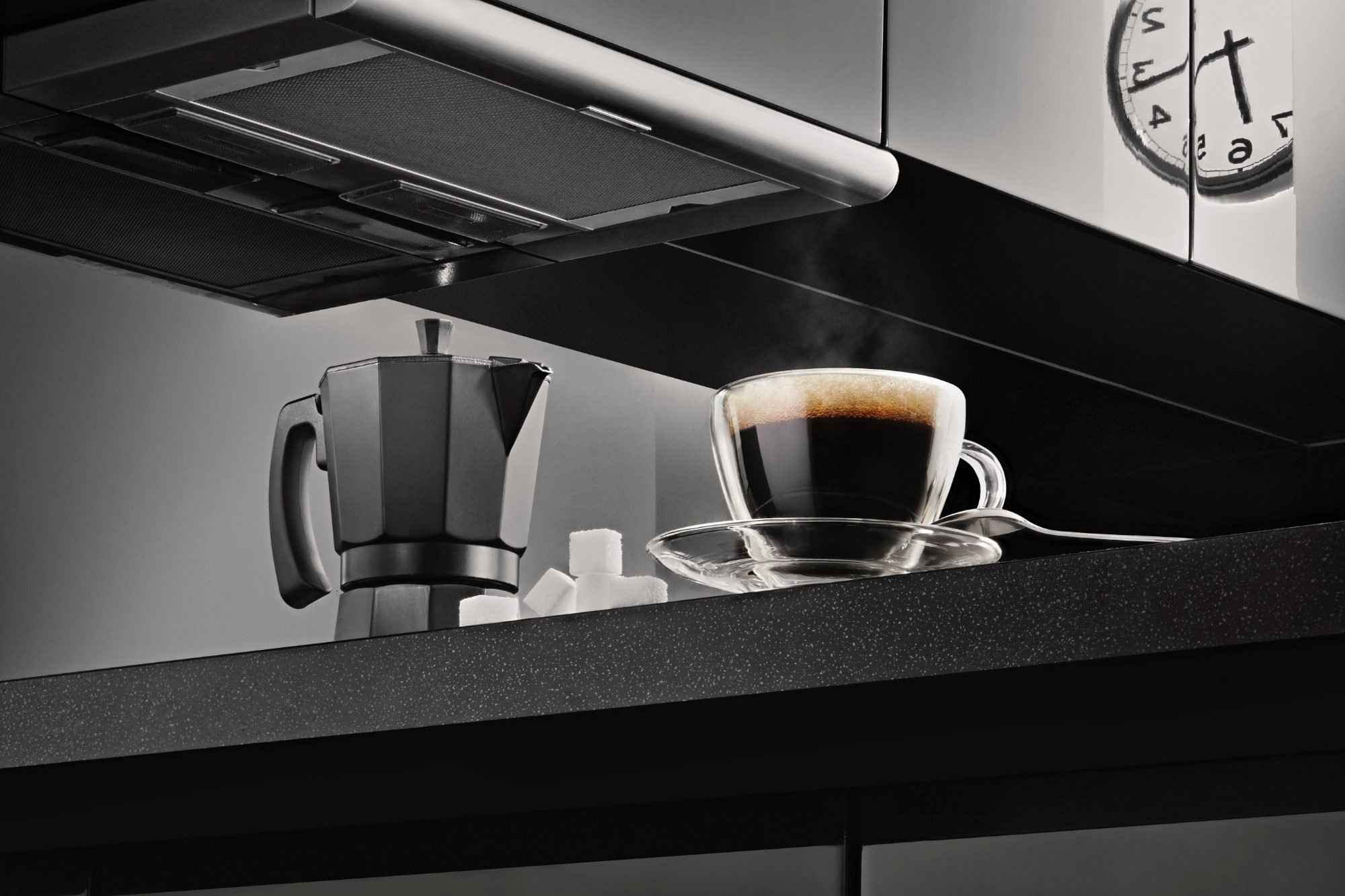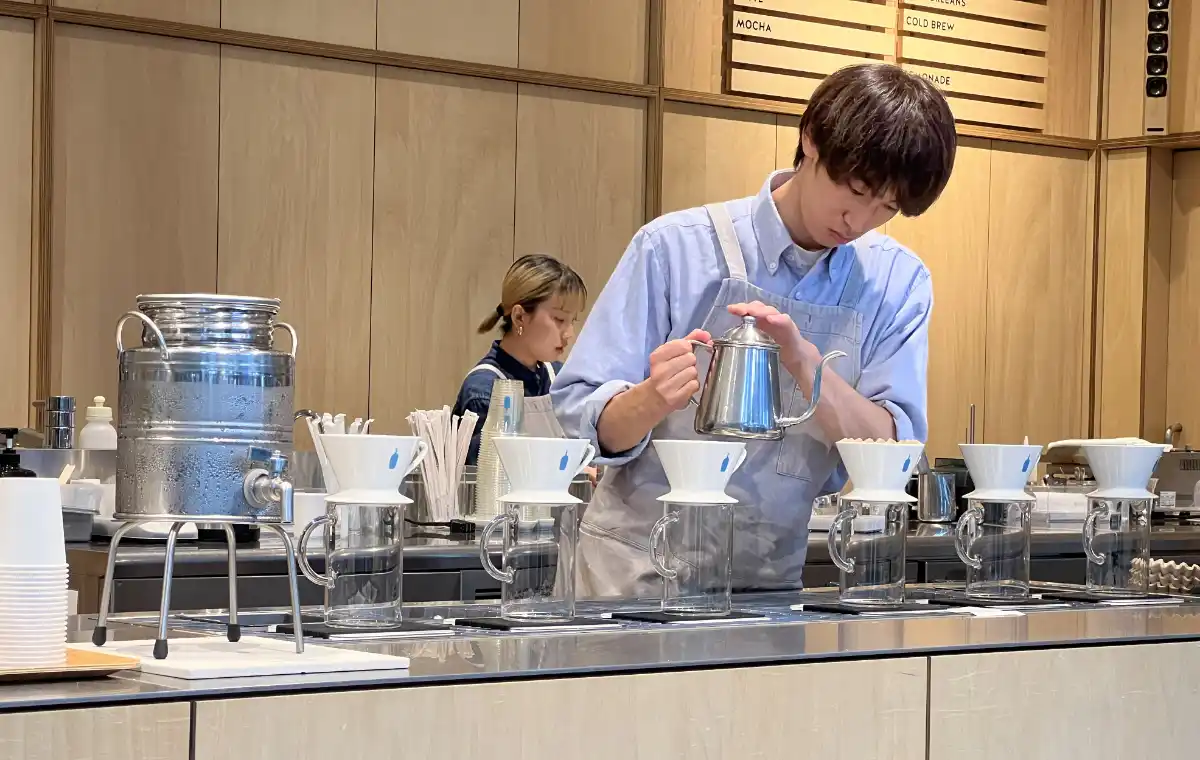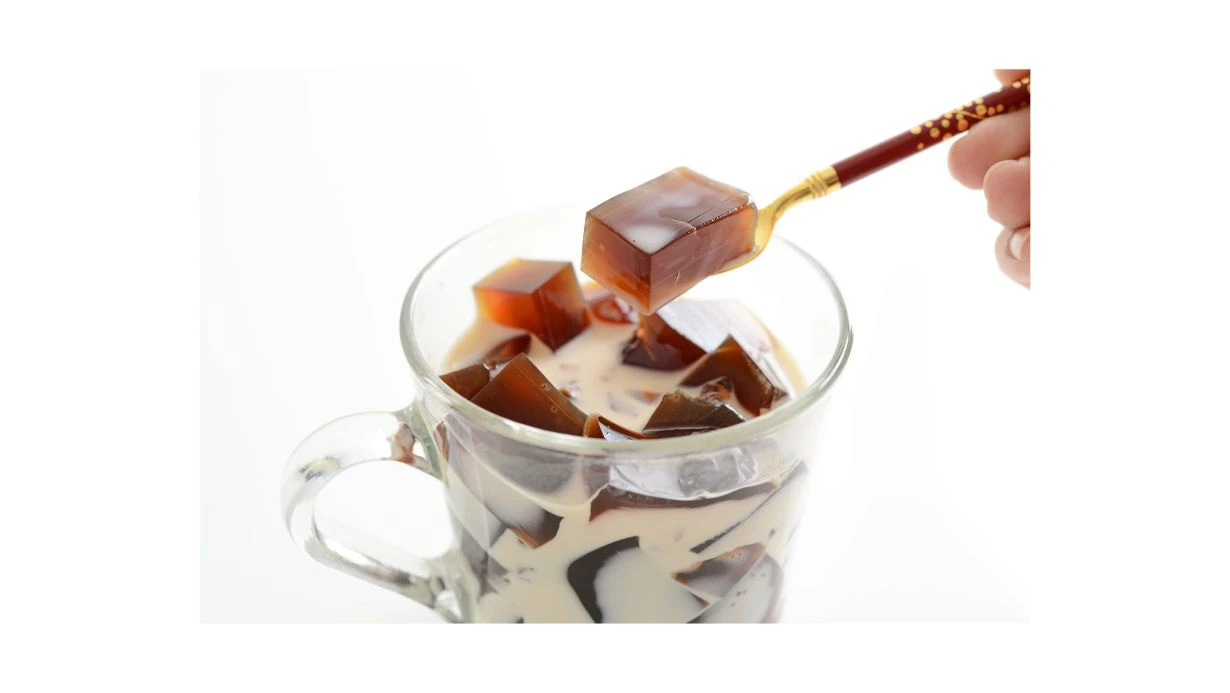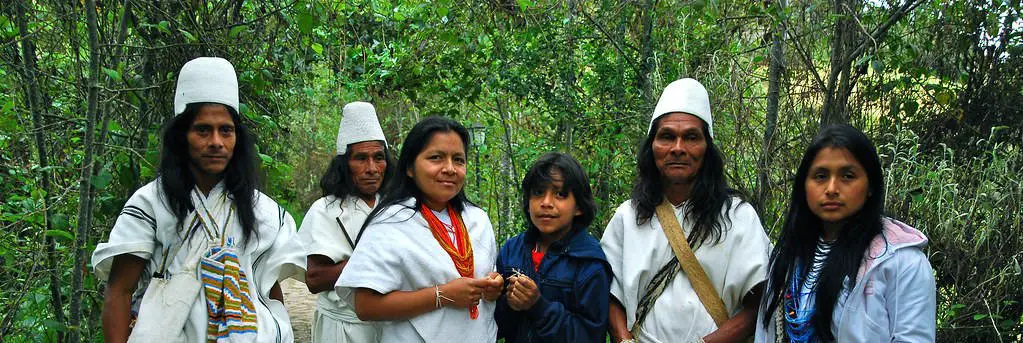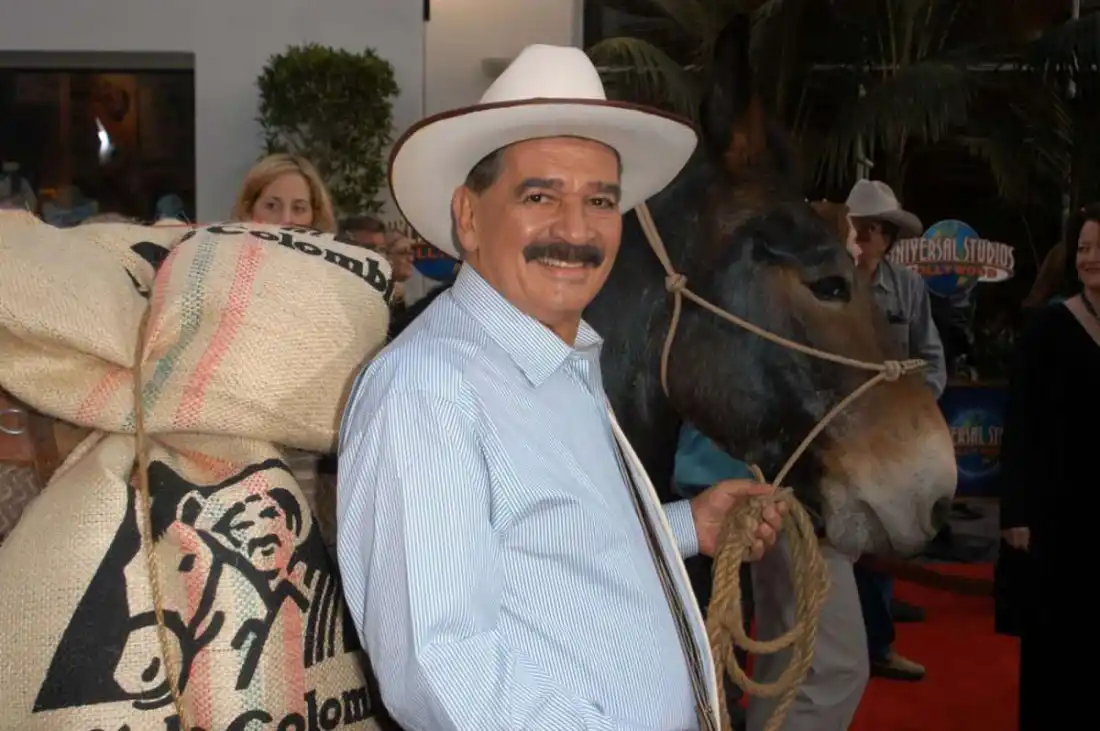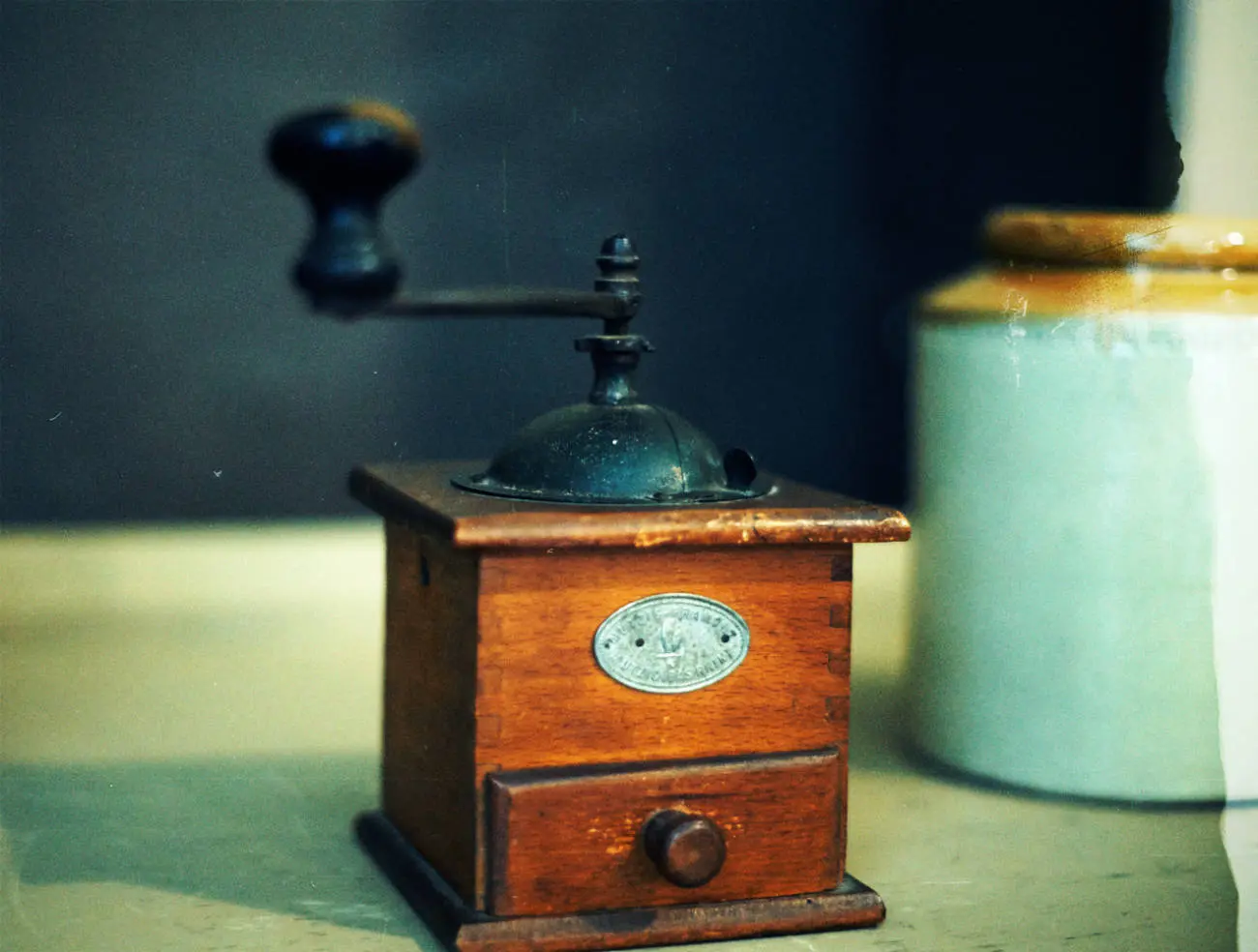The moka pot, a timeless Italian icon
I believe virtually anyone has seen a moka pot, the iconic stove top coffee maker with its characteristic octagonal shape in shiny aluminum. After all, it is around for more than 80 years, practically unchanged. It was invented in 1933 by Luigi de Ponti and made popular by Alfonso Bialetti and the company carrying his name. Once WWII ended its popularity reached new heights and more than 300 million units have been sold worldwide since 1950 under the product name Moka Express. It comes as no surprise that in Italy, you will find a Moka pot in 9 out of 10 households, it is really the Italian coffee maker per se.
Try coffee from Indonesia or the Pacific region. Save 15% with a father’s day discount from Volcanica Coffee. Use code DAD15 at checkout.
Born in difficult times
Before the arrival of the moka pot, another Italian invention had already revolutionized the world of coffee: the espresso machine. The first ones producing single shots were installed in coffee houses in the early 1900s in Italy. They soon became a social phenomenon similar to Starbucks in our days and people began congregating and socializing in coffee houses. In those days, this was a very male-dominated thing, though.
In the 1930s, the economic situation deteriorated all over Europe, and fascism was on the rise in Germany and Italy. In 1935 Italy invaded Ethiopia for the second time and merged it with other parts of the continent it controlled already into Italian East Africa. The invention of the moka pot by Luigi de Ponti fell into these tumultuous times. Nevertheless, Alfonso Bialetti saw the potential of this invention and started manufacturing the moka pot, which is also called a caffetiera in Italy. It allowed families to make great coffee in their homes and to save on their coffee bar bills. Now, an espresso-like coffee can be enjoyed at home. It was not quite the same thing, but it was close enough and very affordable. This was certainly a very important reason for its success.
The success story made by Renato Bialetti
The big breakthrough came only after the war, when in 1946, Renato Bialetti, the son of founder Alfonso Bialetti, took charge of the family company. His focus was on marketing. The Moka pot got its official name, “Moka Express”, and he himself became an advertising star for his own product. He is the man with the flamboyant mustache and appears as a mascot on all Bialetti Moka Express pots.
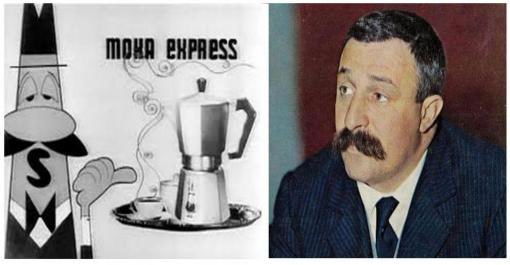
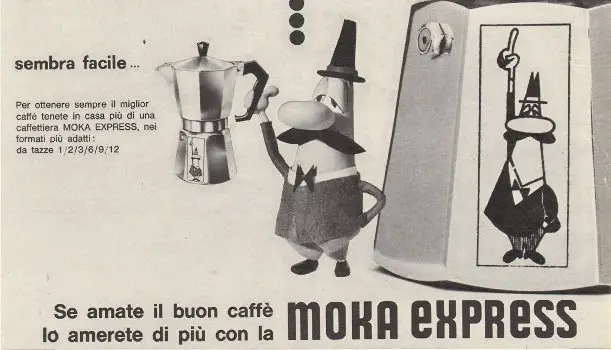
Sales really took off on a worldwide scale, mostly in Europe and Latin America. But you can find the Moka Express easily, even in places as far away as Japan. And in Italy, its home country, you will find it in 9 out of 10 households. The company claims that more than 300 million units have been sold since 1946. Of course, even today, it is sold in almost every store that sells coffee paraphernalia.
In recognition of its outstanding design, it is displayed in several design museums, among them even the prestigious MoMA in New York.
The Bialetti era comes to an end – but the Moka Express is still alive
The Bialetti family decided to sell the company in 1986, but Renato Bialetti remains the mascot on the Moka Express until today.
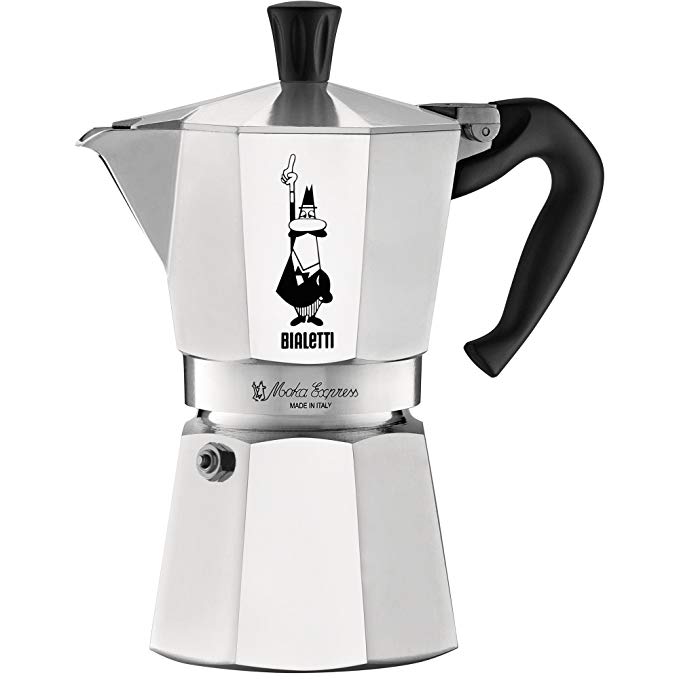
In view of the changing global economic environment, the new owners stopped manufacturing the Moka Express in Italy and moved production to Romania. But if you want to experience the particular flavor of coffee brewed in this coffee maker or you are hit by a nostalgic feeling for this icon of the 20th century, you can still buy it.
Renato remained dedicated to his life work even after his death at the age of 93 in 2016. He requested that his ashes be deposited in a giant version of the Moka pot, quite an unusual way to go.
Before you have your ashes put in a Moka Pot, you should use it for the purpose it was invented for and that is to make a great coffee.
However, the manufacturing of the Moka pot is no longer done in Italy and was moved to Romania. This country is now a member of the EU and labor costs are much cheaper.

Renato Bialetti passed away in 2016 at the age of 93. He requested that his ashes be deposited in a giant version of the Moka pot, quite an unusual way to go. But it also demonstrates his amazing dedication to a single product not only throughout his life but even beyond.
Read the full article in the Telegraph.
Photo: AP/Danilo Donadio
Is this espresso – without crema?
Sometimes, a Moka Pot or the Moka Express are also referred to as a stovetop espresso maker. This, of course, is misleading.
Most obvious is the lack of crema you would expect in a great real espresso. When the coffee comes out of the nozzle and fills the upper chamber, there is a little foam that will disappear as soon as you pour the coffee into a cup.
The reason is very simple. Crema is produced by the high pressure of about 9 bar that an espresso machine generates. The moka pot, on the other hand, will generate a pressure of only 1.5 to 2 bar which obviously is not enough to produce the desired crema.
So, forget about the idea of an espresso and think of a coffee specialty in its own right. It has a unique flavor profile and will add to your coffee experience and enjoyment.
How to use the Moka Express
Don’t plan your funeral yet. No need to decide whether to have your ashes put in a moka pot as well.
Let’s first use it for the purpose it was invented for, and that is to make a great coffee.
The Moka Express consists of three parts: at the base is the bottom chamber, which will be filled with water, a funnel-shaped metal filter, and the top, where the brewed coffee will accumulate. On the bottom of the top part, there is a second metal filter and a gasket.
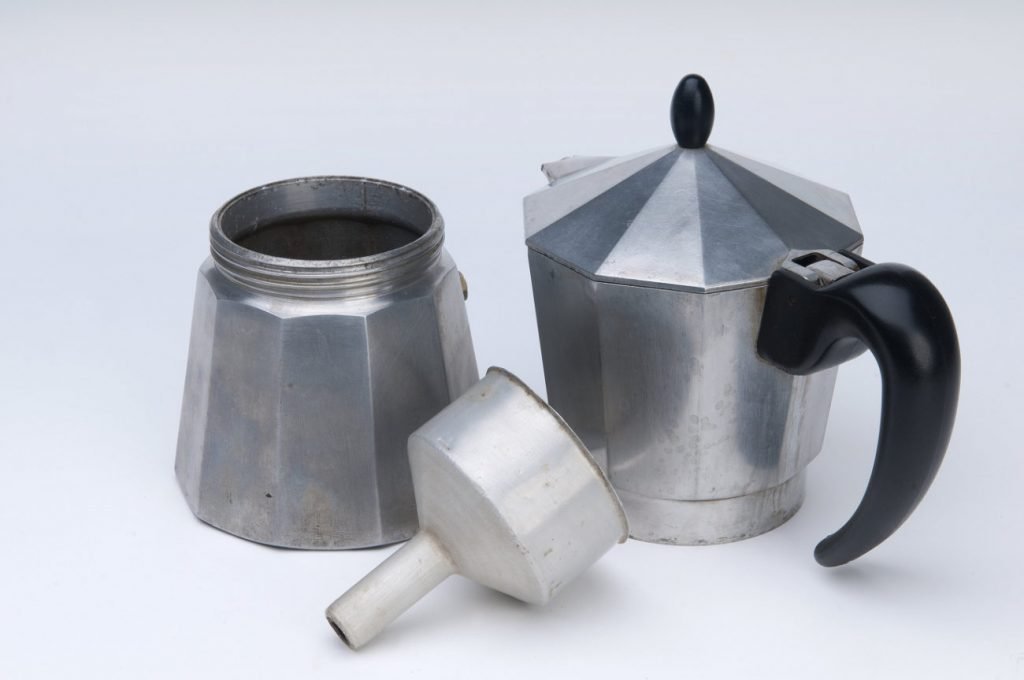
Brewing coffee with the Moka Express and similar models is fairly simple. Here is the short version which should allow you to make a reasonably good coffee.
- Fill the bottom chamber with water.
- Set the funnel filter on top of the bottom chamber and fill it with coffee grounds.
- Screw the top on.
- Place the Moka pot on a heat source.
- When the coffee fills the upper part, take it off the heat source. Your coffee is ready to enjoy.
This not only sounds very simple and straightforward, but it absolutely is.
Best practices for superior results
To achieve the best results, you should take note of a few points. Following these will lift your coffee experience to a new level.
Coffee grounds
Grind your coffee fine like for a regular drip coffee, but not as fine as you would for an espresso machine. Too fine grounds will make it difficult for the water to go through and produce a bitter taste or even clog the filter. Do not tamp the coffee grounds as this will also make the passage difficult, like with too fine grounds. And for the same reason, do not heap too much coffee into the filter, level the grounds, and stay just below the rim.
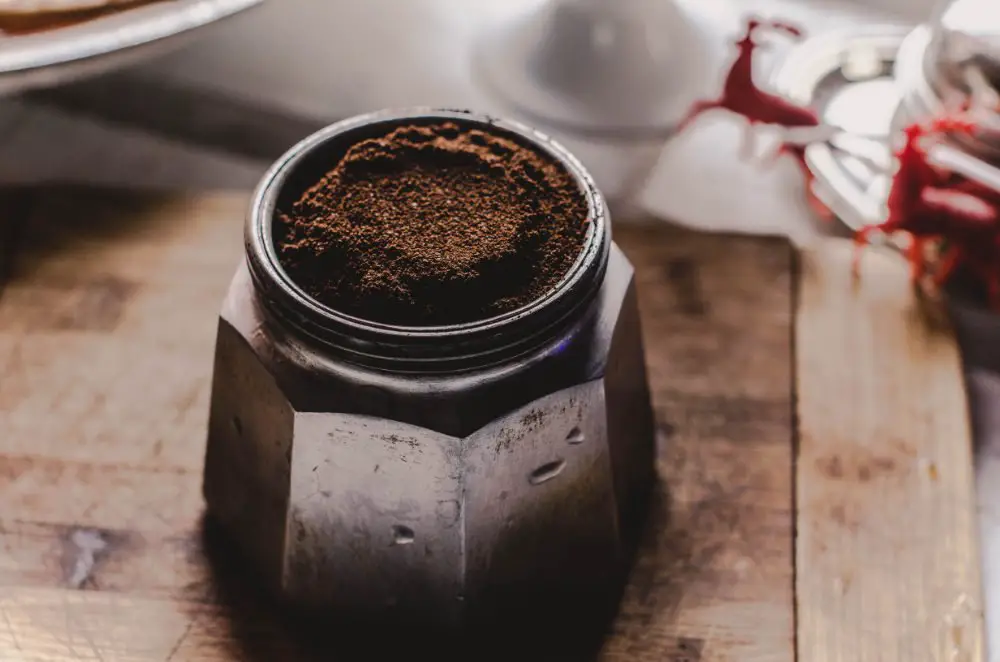
Water
Do not fill the bottom chamber above the safety valve.
Use hot water. This will reduce the time the Moka pot will have to stay on the heat source. The Moka pot is made from aluminum which is a great heat conductor. The coffee grounds sitting in the filter could be exposed to too much heat which can affect the taste negatively.
That’s why you have to be very careful handling the Moka pot after filling it with hot water. It will be very hot right away.
Caution!
The lower chamber will be very hot.
Brewing
The handle of the Moka pot is made from plastic. If you use it on a gas stove be careful not to expose it to the flames. Keep the flames within the radius of the bottom chamber.
Finish brewing
After a while, the coffee will exit the funnel with a gurgling sound. As soon it starts to make a sputtering sound, take it off the heat source. And your coffee is ready to enjoy.This is the standard Bialetti Moka Express for 6 cups. Remember, cup does not refer to a regular cup but to an espresso cup.
It comes also in sizes of 1, 3, 6, 9, and 12 cups, not all of which may be available at all times from your store.
If you want to follow Renato Bialetti’s example to put your ashes in you would have to order a custom size, though.
Are there any alternatives to the Bialetti Moka Pot?
I feel very nostalgic about the Bialetti Moka Pot. After all, it had been in my life from a very young age. The design is timeless, just perfect, and pleasant to look at.
However, recently I noticed in the lower chamber, where you fill in the water, that the bottom is really rough and therefor accumulating some brown coffee residues. This is in the Moka Pot I bought about two years ago when manufacturing had already moved to Bialetti Romania. I really don’t know whether this rough bottom was also present in the old models when they were still manufactured in Italy.
Anyway, I did not like what I saw in there and started to look for alternatives. And there are plenty, including some made by Bialetti.
But for obvious reasons, I was now looking at other makers as well. My top choices are both from Illy, the famous coffee specialist from Italy.
This is the inside of the lower chamber. As you can see, the aluminum is not smooth at all. Residues of the coffee-making process have settled in the crevices and give this dirty look. You may not mind so much, but I do.
Anyway, I did not like what I saw in there and started to look for alternatives. And there are plenty, including some made by Bialetti.
But for obvious reasons, I was now looking at other makers as well. My top choices are from Alessi and Illy, the famous coffee specialist from Italy.
This is a unique and functional design of the Moka Pot by famous Alessi in top quality.
You can set your cups on the flat lid to warm them up for a perfect coffee experience.
This gray Moka Pot makes 6 aromatic cups of coffee.
This is the Alessi Pulcina Moka Pot. It makes 3 cups of great coffee.
This Moka pot is jointly designed and produced by the well-known Italian coffee specialist Illy and Alessi, famous for countless unforgettable designs of household products.
